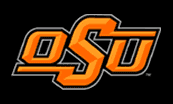
|
Oklahoma State University Stillwater, OK |
|
Oklahoma Alfalfa |
|

|
Oklahoma State University Stillwater, OK |
|
Oklahoma Alfalfa |
|
|
POTATO LEAFHOPPERS In alfalfa, potato leafhoppers generally do better in high rainfall and humid areas of eastern Oklahoma than in the central and west. In some situations they cause unexpected damage. Alfalfa producers should scout fields and take notice of leafhoppers. ECONOMIC THRESHOLDS: The potato leafhopper adult is a light green, wedge-shaped insect about 1/8 inch long. Nymphs closely resemble adults; however, they are smaller, yellow, and wingless. Both adults and nymphs are very active; they can move sideways and backward as rapidly as forward when disturbed. Potato leafhoppers are year-round residents of the Gulf Coast states and gradually migrate northward with spring winds. Because of wind dispersal, potato leafhoppers are likely to be a pest of alfalfa from June to October. This insect poses the greatest threat when rainfall and humidity are high. Potato leafhopper populations decline when hot, dry conditions prevail. DAMAGE: Both adults and immatures use their piercing-sucking mouth parts to feed; however, the most serious damage is caused by nymphs. Initial feeding damage is characterized by a wedge-shaped yellow area formed on the leaf tip known as "hopperburn." Heavy feeding causes the entire leaf to turn yellow and heavily infested fields can appear chlorotic. Weedy, thin alfalfa stands may be the result of stunting, caused by leafhopper infestations during early regrowth. Damage is usually worse along field margins. Mowing adjacent ditches when the alfalfa field is regrowing can increase the chances of leafhopper damage. The best means of detecting leafhoppers, before damage appears, is a sweep net. Sample at least five spots across a field. In each area, take at least 20 sweeps before counting insects. Treatment is justified when the following criteria exist for alfalfa height and leafhopper numbers: |
|||||||||
|
|||||||||
|
Phil Mulder, Extension
Entomologist Department of Entomology and Plant Pathology Oklahoma State University |
 |
||||||||